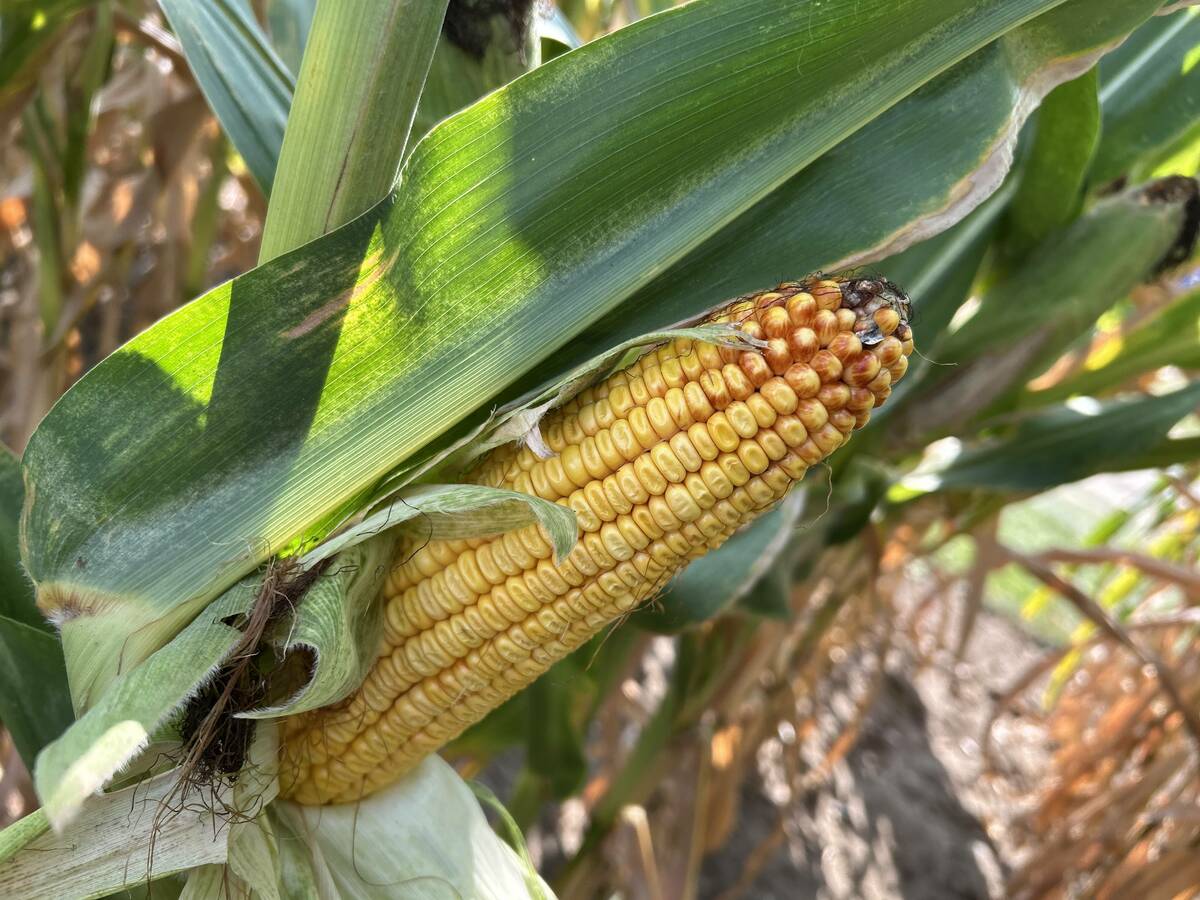Similar protein content, milling quality | Canadian Prairie Spring Red wheat able to compete with Hard Red Winter wheat
Canada Prairie Spring Red wheat could gain a significant share of the global market for high quality milling wheat, the Prairie Grain Development Committee meeting in Sask-atoon was told last week.
But before that happens, the wheat industry must ensure that the baking and milling qualities of CPSR varieties are maintained at levels comparable to or better than those of other popular milling wheat classes from the United States, such as U.S. Hard Red Winter (HRW) varieties.
As well, domestic CPSR production must be increased to ensure that reliable quantities are available to overseas buyers. Without predictable supplies, millers and bakers will be reluctant to try new wheat classes that require adjustments in milling and baking procedures.
Read Also

Crop estimates show mixed results
Model-based estimates used by Statistics Canada showed the 2025/26 crop year has seen increases in canola, corn for grain, oats and lentils production while seeing dips in spring wheat, durum wheat, soybeans and barley in comparison to 2024/25.
Erik Ordonez, marketing manager with Richardson International, told the meeting that global markets for milling wheat will continue to increase.
According to U.S. Department of Agriculture figures, global annual consumption of wheat has exceeded 650 million tonnes in each of the past five years.
At the same time, U.S. wheat acreage has decreased while corn and soybean acres have expanded.
Canada is a smaller wheat producer than many other countries.
Production, excluding durum, is normally 20 million tonnes a year, about two-thirds of which is exported.
Asia and Latin America, the two largest markets for Canadian milling wheat, have historically preferred Canada Western Red Spring wheat varieties because of their exceptional milling and bread making characteristics.
In many cases, CWRS is blended with lower quality milling wheat from other countries.
CWRS is viewed as a superior milling wheat class, but CPSR varieties have significant market potential.
Under the right circumstances, they could compete with popular milling wheat varieties grown in other parts of the world.
Ordonez said Canadian CPSR varieties already have better dough handling characteristics than American HRW varieties.
“The dough handling properties of CPS reds in Latin America and Asia are superior to (American) Hard Red Winter varieties currently,” he said.
“Given the option right now, in Latin America at least, most customers would take CPS red hands down. The problem, however, with this class of wheat has been the lack of (reliable) supply.”
Ordonez said overseas buyers would be more inclined to alter their preferences if they are assured predictable and reliable quantities, clean supplies, good quality characteristics of protein, good milling yield and absorption characteristics, and low incidence of vomitoxin, aflotoxin, ochratoxin and heavy metals.
Ordonez’s message suggests that Canadian wheat breeders have much to gain by focusing on developing improved varieties within the CPSR class.
Despite having lower protein content than most CWRS varieties, newer CPSR varieties offer a significant yield advantage. Under the right conditions, CPSR varieties can produce yields that are 10 to 20 percent higher than CWRS checks.
Nancy Edwards, program manager for bread wheat research with the Canadian Grain Commission, said newer CPSR varieties such as Crystal and 5700 series CPSRs are in a perfect position to compete with American HRW varieties.
“The U.S. Hard Red Winter class is one of the largest market classes in the world,” said Edwards. “They (American HRW buyers) have been exporting, over the last 10 years, between 10 and 16 million metric tonnes annually. That’s just about the volume … of total wheat exports each year out of Western Canada.
“That’s a huge market opportunity then, to move into some of those markets and based on the current quality characteristics of the newer CPS reds, we’re in a perfect position to go head-to-head against that wheat in a lot of those markets.
“We’re looking at a similar protein content (to American HRWs), we’re at least as good in absorption capabilities, we’ve got equal or better dough strength and we have exceptional baking performance.”
Edwards said Canada’s variety registration system also ensures consistency in performance, a major consideration among customers.
The lower protein content in CPSR varieties should not be mistaken for lower quality, she added.
“Lower protein content does not necessarily mean lower quality. In many cases, I think … (CPSR varieties) are outperforming CWRS, given the protein content that we’re dealing with.”
Average protein content of CPSR varieties grown in Canada has been 11 to 12.5 percent over the last 10 years. By comparison, the long-term average of CWRS varieties grown in Canada has been 13.7 percent.















